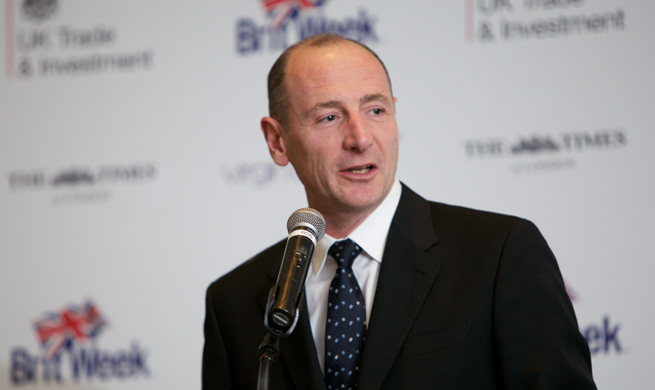 “How many of you have traveled international?” is one of Andy Bird’s favorite challenges to audiences. When a number of people inevitably raise their hands to signal “yes,” he reveals a sly but respectful “gotcha” smile to point out that, “International doesn’t exist.”
“How many of you have traveled international?” is one of Andy Bird’s favorite challenges to audiences. When a number of people inevitably raise their hands to signal “yes,” he reveals a sly but respectful “gotcha” smile to point out that, “International doesn’t exist.”
Bird is the chairman of Disney International and oversees the brand’s global strategy. Rather than being Disney’s international “kingpin,” he sits atop globally placed local managing directors that act like “mini-Bob Igers” in their regions, be it China, India, Russia, Latin America, or Korea.
One of the most appealing things about Bird is how “nonproprietary” he is about Disney’s strategies. The Burbank-based Brit embodies the belief and his own core values that a “rising tide will lift all boats” and if others listen to him, could lift all hopes.
And Disney’s strategy?
Up until relatively recently, Disney had an export approach to the world, whereby everything was created and produced in America and then pushed out to the world. Bird says the problem with that is that although the Disney brand – knowing that it stands for quality, creativity, and integrity – has been well-known around the world, that local markets around the world were not as familiar with it as America was.
Rather than approaching other markets as “one size fits all,” Bird said the approach has been to build the Chinese Walt Disney Company, Indian Walt Disney Company, and so on. It’s a subtle difference that is accomplished by focusing on three factors in each market:
1. Disposable Income. What is the current and future amount of money that consumers will have to spend on entertainment?
2. Technology. What is the preferred mode of receiving entertainment (digital, mobile, movies, TV, etc.)? For instance, China is more advanced in cable technology, and India is more advanced in mobile phone services and quality than the United States.
3. Regulatory Environment and Infrastructure. What are the restrictions and openings to do business with a region? China is much more restrictive to movies and TV that originates outside the country but more receptive to a consumer goods and retail focus. India is all about movies and TV, but their consumer goods and retail market is in a nascent state.
Above all, Bird credits Walt Disney’s personal love and passion for traveling as a driving factor behind the company’s understanding of other cultures. This mindset is evident in enduring entities such as the “It’s a Small World” ride and the “Wonderful World of Disney” television show, which ran for 53 seasons (1954-2008) and was a Sunday night staple for family viewing.
Bird had the good fortune to work for two maverick visionaries in Ted Turner and Richard Branson. The 50-year-old exec cites the 10 years he worked with Turner as a liberating environment where taking calculated risks was encouraged. At Virgin, he saw Branson consistently emphasize the importance of promoting a fun and creative atmosphere.
For the past decade, Bird has had the privilege of spearheading the globalization of one of the most beloved brands in the world of entertainment. Never has a small world held such grand potential.
Ten Practical Steps to the Creative Process
- Put the Consumer First. Know the emotional and functional needs.
- Exploration, Discovery, & Curiosity. Many great ideas start with a single discovery.
- Focus. Limit the number of projects they work on.
- Simplicity. Simplicity is more difficult to achieve than complexity.
- Learn from Failure. Learn to fail fast, learn fast, and fix fast.
- Quality. Quality is the best business plan.
- Honesty. Ask difficult questions. Generate trust.
- Teamwork and Sweat. “Genius is 1% inspiration and 99% perspiration.” – Thomas Edison
- Create a Happy Environment. Create an environment where it is safe to be candid.
- Dream Bigger. All big dreams are bold, specific and concise.













































